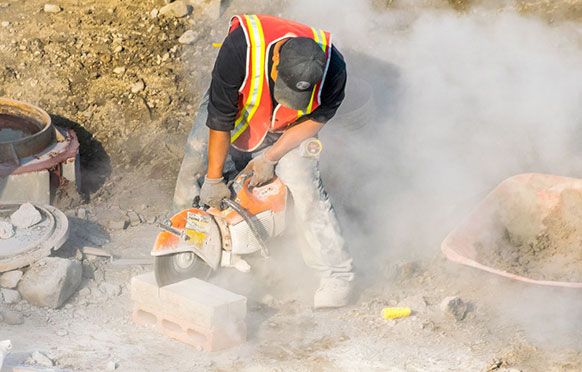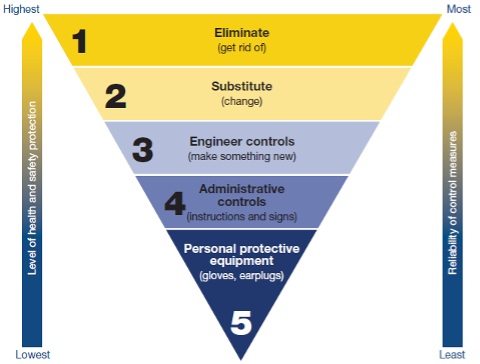Crystalline silica is a natural substance found in stone, rocks, sand and clay, as well as products like bricks, tiles, concrete and some plastic composites. When these materials are worked on, for example by cutting or drilling, the crystalline silica is released as a very fine dust which can be breathed in. This dust is one of the oldest workplace hazards – and it still causes hundreds of thousands of deaths across the world every year.Silica dust (crystalline silica) is found in some stone, rock, sand, gravel and clay. The most common form is quartz. Silica dust can also be found in the following products:
When these materials are worked on, silica is released as a fine dust known as respirable crystalline silica or silica dust.
You may be exposed to silica dust if your work involves:

5 micrometers in size. Compare this to the full stop at the end of the sentence, which is around 200–300 micrometers in diameter, and the finest sand on that beach, which is about 50–70 micrometers. Individual silica dust particles are so small that they are invisible to the naked eye in normal light – so you can have relatively high airborne concentrations without being aware that the dust is being inhaled.
All workplaces must follow work health and safety laws.
To follow work health and safety laws, employers should eliminate or reduce exposure to hazards by following the risk management process (Figure 1). If suitable control measures are not in place, anyone working around silica dust has an increased risk of developing lung cancer. Workers should always be involved in the process.

When selecting a respirator, make sure it provides sufficient reduction in exposure to protect the worker’s health and also that it’s right for the wearer, for example in terms of fit to the face. All classes of respirator are given an ‘assigned protection factor’ (APF), a rating that indicates the minimum reduction in exposure that should be achieved. There are three types of filtering facepiece respirator in the EN 149 standard:
Remember
Controls only work if you use them! They rely on discipline and behaviours.
Legislation and resources
Please click the links below to book your place on one of our training courses relating to protecting yourself from the risks of Silica Dust.
CITB Health and Safety Awareness
CITB Site Management Safety Training Scheme (SMSTS)
CITB Site Supervisors Safety Training Scheme (SSSTS)
BOHS Certificate in Controlling Health Risks in Construction (CCHRC)
IOSH Managing Occupational Health and Wellbeing Training Course
RELATED ARTICLES - Health and Safety Toolbox Talks
Published on 01 August 2022 By Gary Holland
Chartered Health and Safety professional, with extensive knowledge of creating and implementing health and safety, environmental and quality management systems.
Experience in working with a number of high profile clients in demanding and high-risk industries, including; Utilities, Construction, Manufacturing, Renewable Energy (offshore and onshore wind), Defence, Nuclear and Public sector.
I am able to understand client’s needs and expectations and deliver projects to high standards, implementing best practice above compliance.
